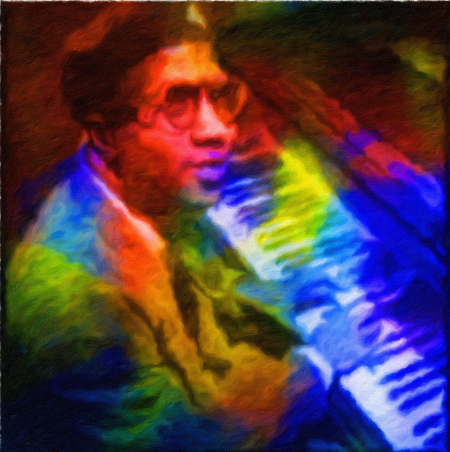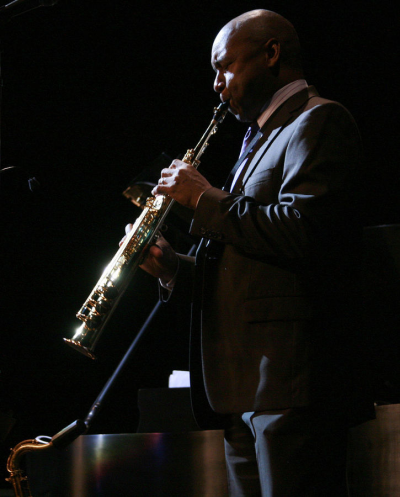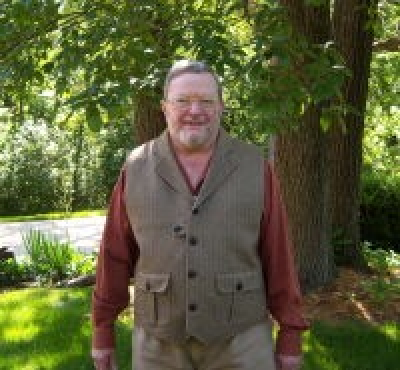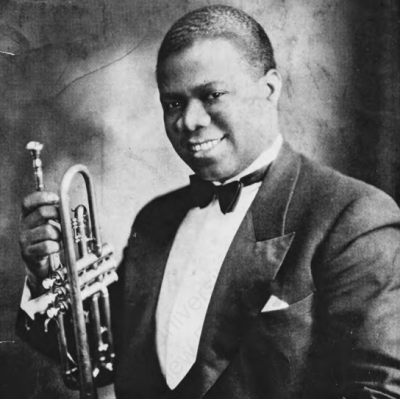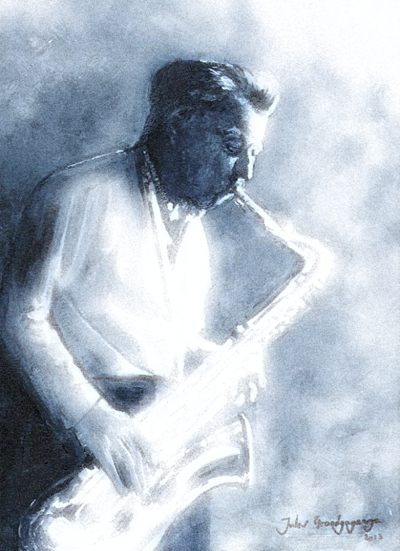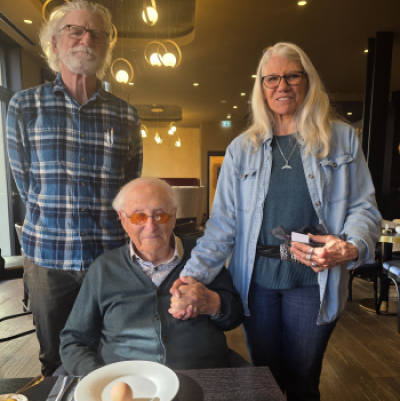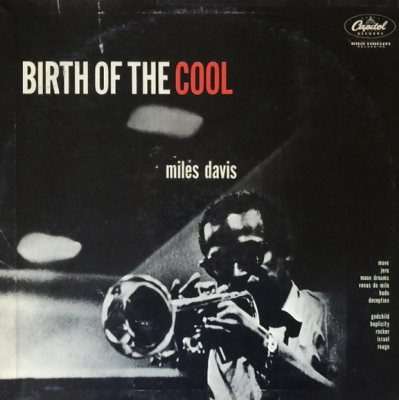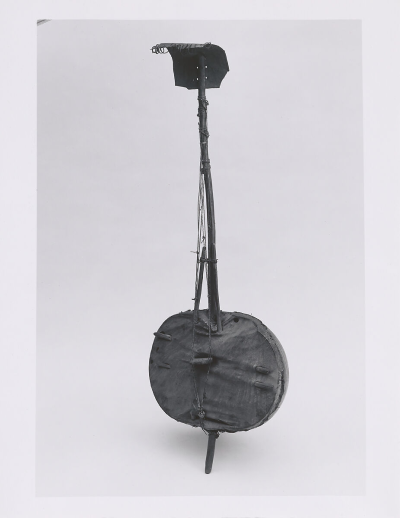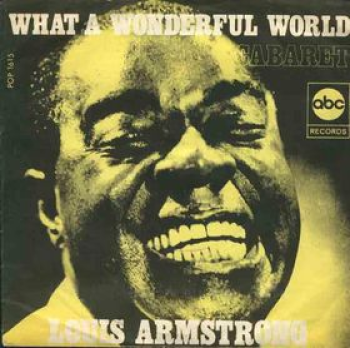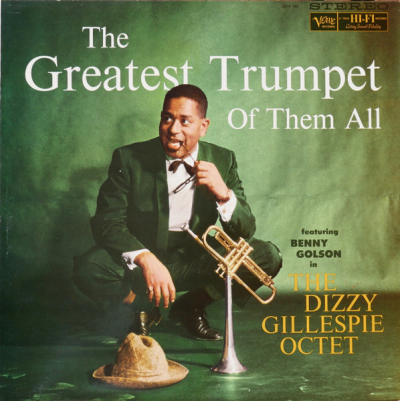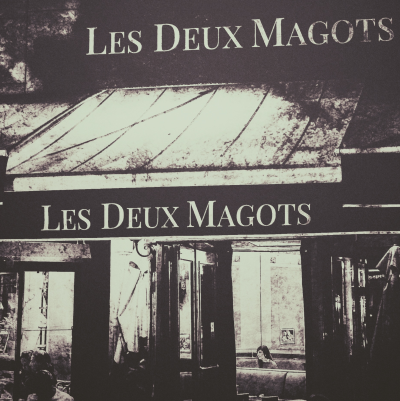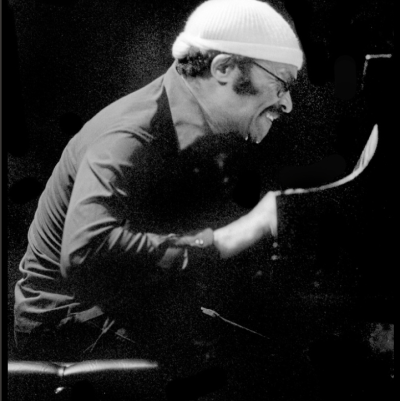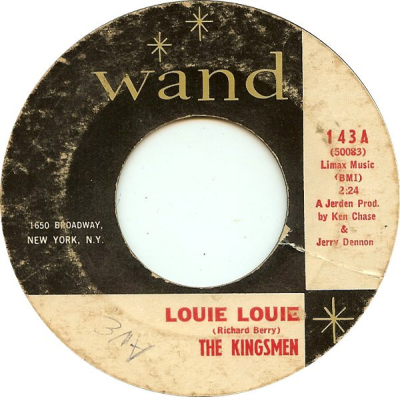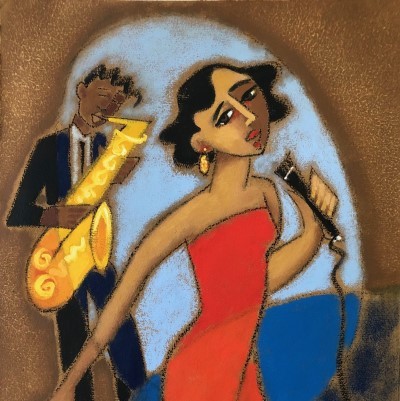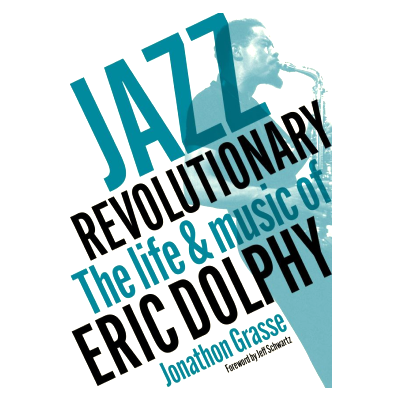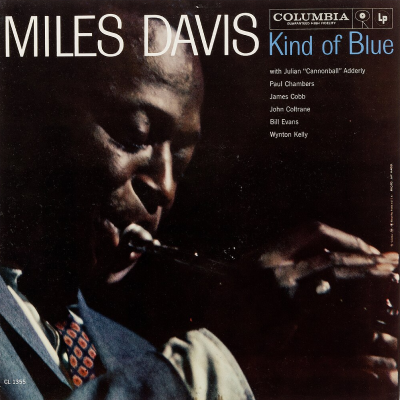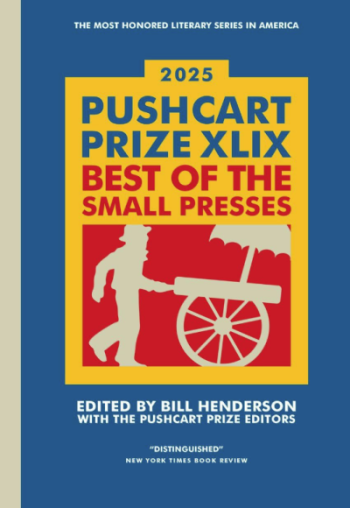Great Encounters
Book excerpts that chronicle famous encounters among twentieth-century cultural icons
*
When Gene Krupa hired Roy Eldridge
_____
Excerpted from
Roy Eldridge: Little Jazz Giant
by
John Chilton
______________
The booking at the Capitol was extended into 1941, but Roy’s long term prospects looked no better than they had a year earlier. However, Roy’s old friend drummer Gene Krupa was about to offer him a life-changing opportunity. Krupa had finished his stint with Benny Godman almost three years earlier and was now one of the foremost bandleaders of the era. Krupa’s Band played at the Hotel Sherman in Chicago during late 1940 and Gene often visited the Capitol (with his wife Ethel and manager Frank Verniere) after he’d finished his sets. Sometimes Roy went off with Gene to find a nightspot on the South Side where they could jam and eat ribs. During this Chicago stay Roy, as ever, was always game for an “after-work” blow, and when Cab Calloway’s Band was in town he greatly enjoyed jamming at the Du Sable Hotel with his old sidekick Chu Berry (sadly, not long after these sessions, Chu lost his life in an automobile accident). Roy took no rest on Sundays, he usually played at jam sessions organized by Harry Lim. During Krupa’s Chicago stay, his trumpeter Clarence “Shorty” Sherock had to miss a couple of dates and Gene was delighted when Roy agreed to deputize. Krupa had always been a fan of Roy’s playing, but his admiration increased when he felt the degree of swing that Roy’s musical presence brought to the band. Krupa, encouraged by Shorty Sherock’s enthusiasm for the idea, decided to offer Roy a permanent place with the band. Roy was thrilled to receive the invitation but pointed out that he was still under contract to Joe Glaser, who would have to approve the deal; Roy had also taken the lease on an apartment at 55th and Michigan. Metronome magazine must have been well abreast of the situation: a small news item in its November 1940 issue was headed “Eldridge for Krupa?” Meanwhile, Roy played through to the end of his booking at the Capitol Lounge, prior to beginning a four-week stint at the Blatz Club in Milwaukee (from February 26, 1941). When that was completed Roy disbanded and moved back to New York prior to playing a split-week in Providence, Rhode Island, as a guest star with Gene Krupa. Things went well, so Roy decided to request formally that Joe Glaser release him from his contract, but Glaser insisted that Krupa would have to pay for the five years that were left on the agreement which Roy had signed with him in 1938. Roy went to the White Rose Bar in New York and relayed this information to Krupa’s manager, who told Roy that Gene didn’t want to pay for the contract. After further negotiations, Glaser agreed to sell the contract back to Roy for $1,000 – the amount to be paid in installments from money taken from Roy’s wages with Krupa.
Roy was now at liberty to become a full-time member of Gene’s Band. He did so by joining the outfit for their six-week residency at New York’s Hotel Pennsylvania, beginning in April 1941. Roy’s wages were $150 a week, $25 more than he had been making with his own quintet in Chicago. Roy was happy with the deal, but realistically pointed out, “I turned out to be the big thing for the band.” Swing fans were absolutely delighted by Roy’s move, as were the musicians in Krupa’s Band. According to Canadian trumpeter Graham Young (then only 19 years old) the band had recently been taken apart in a “Battle of the Bands” with Jimmie Lunceford’s Orchestra at a ballroom in Baltimore:
We lost terribly. There had been talk about hiring Roy Eldridge but the officials at M.C.A., who ran the band at the time, were afraid of the public reaction of having a black person sitting in a white band. However, after the Lunceford fiasco, Gene just hired Roy the next day and didn’t ask M.C.A.
The only disgruntled note came from the Chicago Defender‘s columnist Al Monroe, who, under a heading “Roy Eldridge Turns Ofay to Hook up with Gene Krupa,” wrote:
Fletcher Henderson and Roy Eldridge both had bands and broke them up to accept positions with the outfits with which they now travel. This meant that many musicians were thrown out of work. Raiding bands is new to the profession. It means more money, perhaps, for a few musicians, but will this offset the harm it does to our name Negro bands.
At the time, Roy commented, “While I was happy leading my own band, I found I had limitations, and at times it was tough keeping the men together.” Graham Young (who became a lifelong friend of Roy) spoke of Eldridge’s stay in Krupa’s band:
Roy was a wonderful man and he said he wouldn’t join the band if it meant any of the trumpet players had to get fired, so he came on as a feature. No arrangements were written for him at that time, he had to take some of the jazz solos that Shorty Sherock had been playing. After a while, Shorty flipped and got mad at Roy (not at Gene), so Shorty was gone. Roy sat next to me, he was a great guy and inventive. Every night was a jazz lesson, and it was like that for a year and a half.
It wasn’t only the band’s trumpeters who benefited from Roy’s arrival; the rhythm section also felt they had been given a huge lift by Eldridge’s playing. Bassist Ovid “Biddy” Bastien emphasized this, saying:
Back in 1940, I met Roy through pianist Tony D’Amore: we were both with Gene Krupa and Roy invited us up to his apartment in Harlem for a jam session. We had a great time musically and socially, so it was a pleasure to welcome him into Gene’s band. Shorty Sherock was also a real good pal of mine, but he knew he wasn’t the jazz trumpeter that Roy was; he tried to play like Roy but to my ears it came out more like Ziggy Elman.
Shorty Sherock was a great fan of Roy’s playing, and took his admiration to the point where he had his suits made in the same style as Roy, he ordered the same type of spectacles, and bought the same model of car that Roy drove (a La Salle convertible). He was delighted to have made a private recording with Roy, together with pianist Tony D’Amore and Lloyd Hundling (a trumpeter and vocalist with Charlie Barnet’s Band, who lost his life in August 1941 as a result of the car crash that killed guitarist Gus Etri). Roy said the acetate recordings were made at his apartment “just for fun,” and the only title he could remember was The Sheik of Araby. Shorty Sherock’s then wife was Jean Bach, who said:
Shorty certainly idolized Roy’s playing, and took inspiration from it, so much so that trumpeter Bobby Burnet commented on the fact, which led Shorty to say, “When I change, I change all the way.” Shorty was very likeable, a darling blond teddy bear, and he kept suggesting that Gene hire Roy. But when Roy played in the band Gene found himself thinking, “This is the real thing,” and though Gene was a decent, sweet guy he didn’t feel like keeping Roy and Shorty, so Shorty left. He was getting $85 a week then, but had already drawn his wages in advance. Roy and Shorty certainly didn’t become enemies: in fact their friendship stayed as before. But Roy, who I’d known since Three Deuces days, asked me one day “How’s Shorty?” When I told him he was fine, Roy said, to my surprise, “But like all ofays he turned.”
At the heart of the problem was the fact that Roy was allocated a lot of what had been Shorty’s solo spots, and naturally Shorty, who had less and less to play, became vexed. After suffering for five nights at the Café Rouge section of the Hotel Pennsylvania, Shorty launched into an altercation with Krupa’s manager Frank Verniere, and ended his association with the Krupa Band (he left and soon joined Tommy Dorsey). From this point on Roy ceased to be a featured attraction out-front of the band, and instead took his place in the four-piece trumpet section. Roy was still known as “Little Jazz,” but his new colleagues admiringly called him “Leather Lip” (a name that Joe Marsala had originally used about Roy) because of his stamina, range and power. Gene Krupa summed up the esteem that he, and his musicians, felt: “Roy became our spark plug. Every time he played it was like a light going on in a dark room.” Roy and Gene shared a relaxed friendship that was apparent both on and off the stage. Critic Barry Ulanov commented on the band’s stay at the Hotel Pennsylvania:
Roy Eldrige is almost singly responsible for making the Gene Krupa Band the fine outfit it is today. His volatile personality and incredibly versatile trumpeting have sparked the band to a point where it can truly be said to be coming on.
______________________
Roy Eldridge: Little Jazz Giant
by
John Chilton
*
From Roy Eldridge: Little Jazz Giant. Used by permission of John Chilton and Continuum Press






